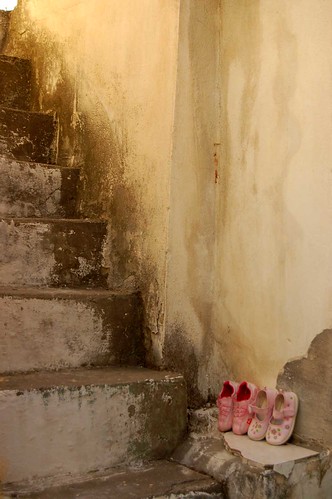aleatory and aleatoric - Composition depending upon chance, random accident, or highly improvisational execution, typically hoping to attain freedom from the past, from academic formulas, and the limitations placed on imagination by the conscious mind. There is a tradition of Japanese and Chinese artists employing aleatoric methods, many influenced by Taoism and Zen Buddhism. In the west, precedents can be found among artists of ancient Greece, and later among artists of the Italian Renaissance. Leonardo da Vinci (Italian, 1452-1519) recommended looking at blotches on walls as a means of initiating artistic ideas. Aleatory was also employed by numerous twentieth century avant-garde artists. Followers of the Dada and Surrealism produced numerous examples. Jean Arp (French, 1887-1966) made collages by dropping small pieces of paper onto a larger piece, then adhering them where they landed. André Masson (French, 1896-1987) and Joan Miró (Spanish, 1893-1983) allowed their pens to wander over sheets of paper in the belief that they would discover in those doodles the ghosts of their repressed imaginations. Similarly, Tristan Tzara (Rumanian, 1896-1963) created poetry by selecting sentences from newspapers entirely by chance.
bricolage - An improvised creation — or seemingly so — something made from whatever materials happen to be available. From the French bricole, meaning a trifle, and which the French used even earlier to mean catapault. Bricolage may be related to bric-a-brac.



No comments:
Post a Comment